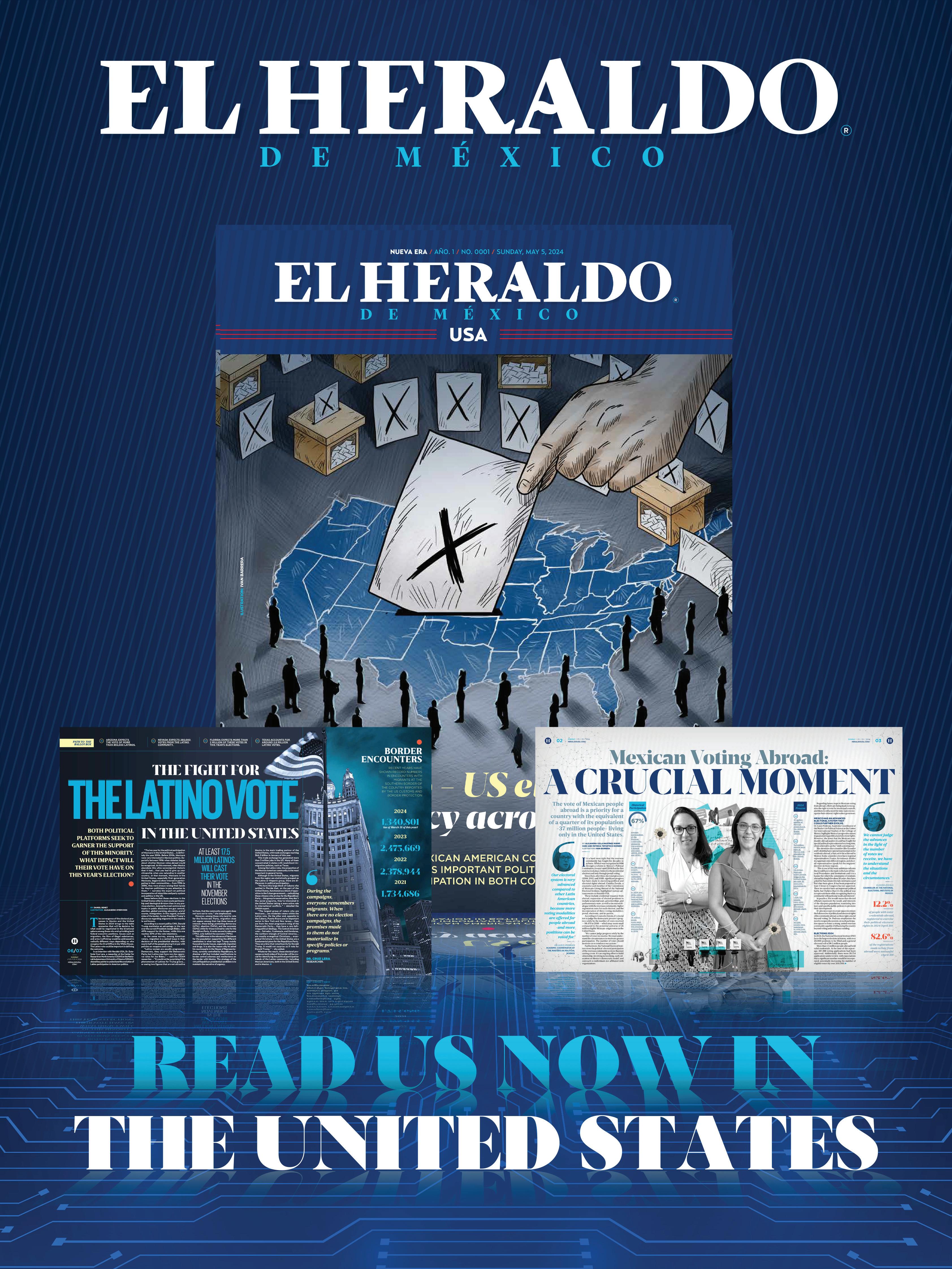

Los Angeles Mexican capital in the US
OUR COMMUNITY HAS FOUGHT IN AND OUT OF THE RING IN THIS CITY FOR MANY YEARS
BROTHERS
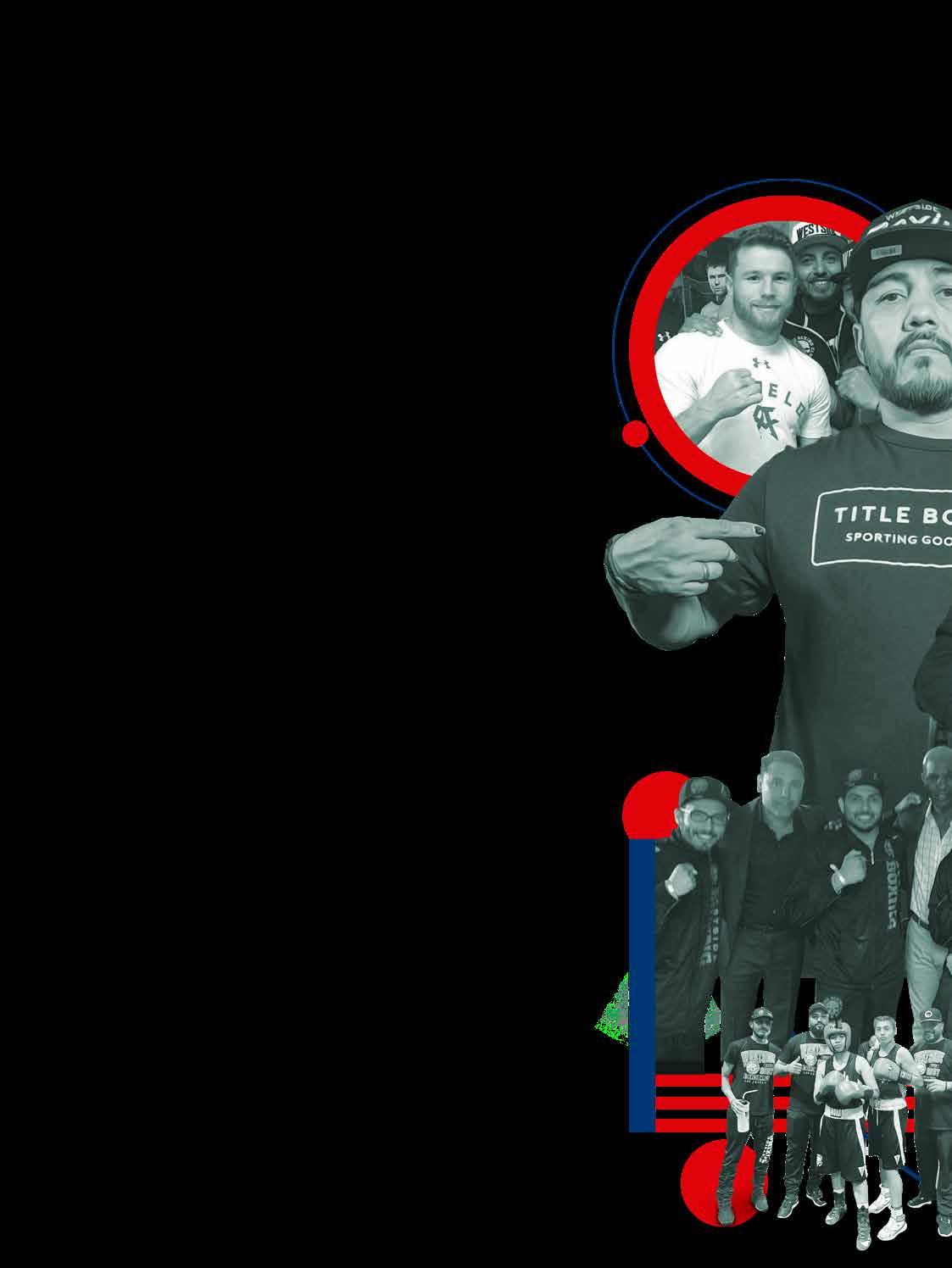
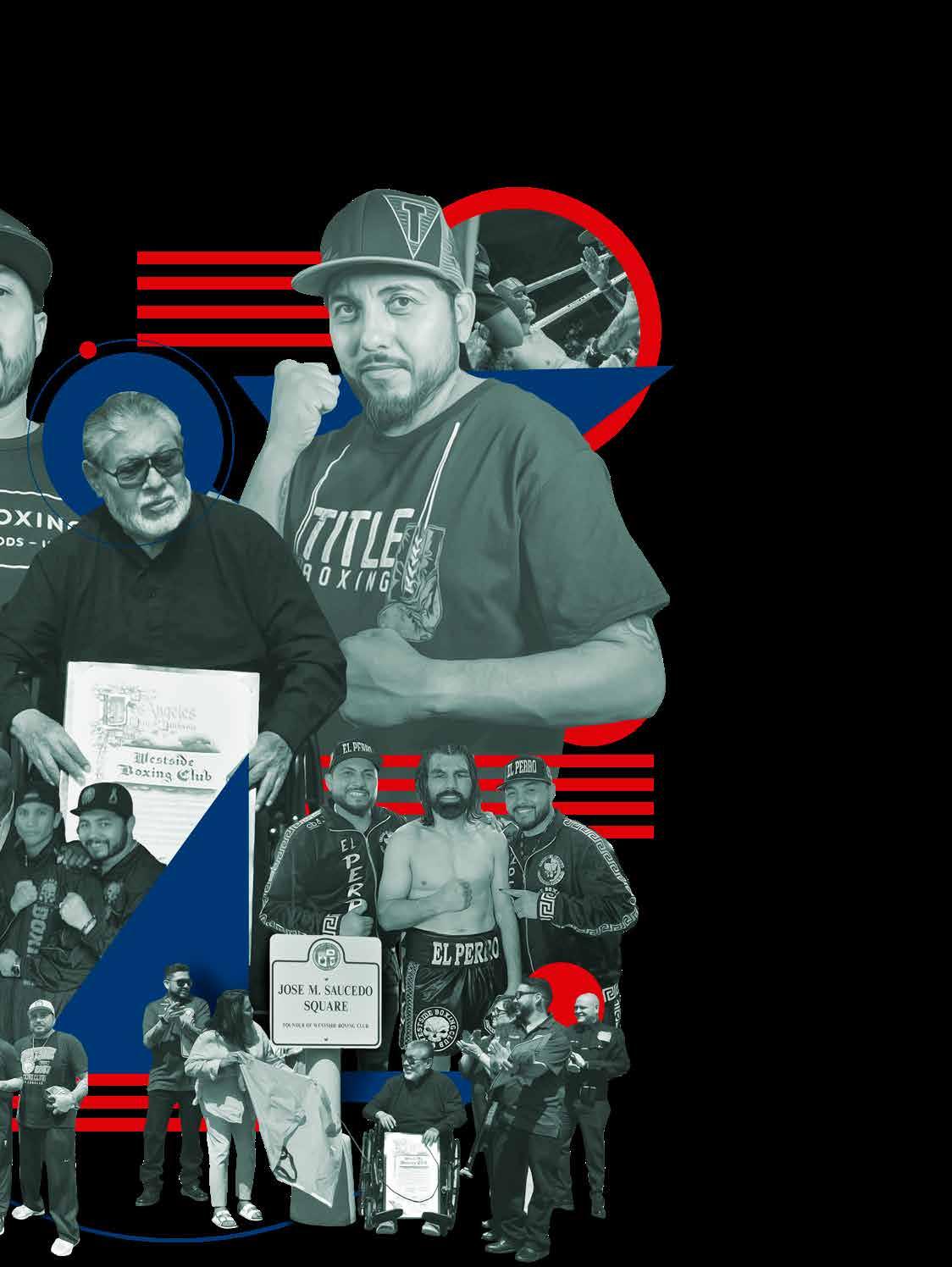
“LOS ANGELES, THE POLITICAL CAPITAL OF THE MEXICAN DIASPORA IN THE UNITED STATES”
Interview with Ambassador Carlos González Gutiérrez, Consul General of Mexico in Los Angeles, California, where 3.7 million people of Mexican origin reside
Bachelor in Foreign Relations (COLMEX) and a master’s degree in Foreign Relations, School of International Relations (USC)
He was the first executive director of the Institute of Mexicans Abroad (IME), 2003 to 2009
Consul Community Affairs at the Consulate General of Mex. in L.A. in the 90s; Counselor for Latino Affairs at the Mexican Embassy in WA D.C. from 1999 to 2003
Consul General of México in Sacramento from 2009 to 2015, in Austin from 2015 to 2019, in San Diego from 2019 to 2023

OF THE LATINO POPULATION IN LOS ANGELES COUNTY IS OF MEXICAN DESCENT SOURCE: 2020 POPULATION CENSUS
1.3 75%
MILLION WERE MEXICANS BORN IN MEXICO, ACCORDING TO THE 2019 AMERICAN COMMUNITY SURVEY
BY:ALEJANDRA ICELA MARTÍNEZ RODRÍGUEZ PHOTO: FEDERICO RODRÍGUEZ CABRERA
Thirty-five years ago, when now Ambassador Carlos González Gutiérrez, Consul General in Los Angeles, arrived in this city to work with the Mexican communities of that county, the situation was not the same as it is now, as of February 26, 2024, when he began his duties, having been unanimously ratified by the Senate in December 2023.
In an exclusive interview with El Heraldo de México, the career diplomat since 1987, and ambassador promoted to that rank since 2011 by the President of the Republic, kindly and cordially receives us in his office, with an incredible view towards MacArthur Park.
Ambassador Gutiérrez shares with us a retrospective vision of what Los Angeles and California were like 30 years ago: “We are talking about the early 90s. It was going through a recession, economically, and the way Pete Wilson, a Republican, tried to get re-elected was by using migrants as the scapegoats for the whole crisis, and he did it very effectively, because despite being in a full recession, he managed to ride on a proposition, Proposition 187, to strip undocumented people and their children of their right to education and health care.” Fortunately for the inhabitants of this state, the situation has changed radically over these three decades, not only economically but also in the fight for human rights.

In the near future, we will
see a governor or a mayor of Mexican origin, more Mexican council members. 30 years ago, there was one council member of Mexican origin; now there are 5, 3 are women”


AMBASSADOR CARLOS GONZÁLEZ GUTIÉRREZ,
CONSUL GENERAL OF MEXICO IN LOS ANGELES, CALIFORNIA
We have to build, and keep improving these bridges of understanding for the Mexican diaspora. There is no better friend of Mexico in the world than California”.

According to the 2020 population census, it was estimated that 75% of the Latino population in Los Angeles County was of Mexican descent, that is, 3.7 million people of Mexican origin. According to the 2019 American Community Survey, it was estimated that 1.3 million were Mexicans born in Mexico.
Facing this growing and flourishing population, the Consul General of Mexico in Los Angeles recognizes the great challenges he faces, which he describes as systemic, and which can only be judged in light of the impact and that “positively influence the lives of literally millions of people,” he emphasizes. It is in the area of documentation where efforts must be concentrated until “the consulate is able to provide services in an efficient, timely, and friendly manner,” he points out.
Nevertheless, there are other aspects where efforts must also be focused: “cases in the area of consular protection from those of high impact, involving the death of a fellow countryman or police abuse. Even the letters that Mexican inmates send us daily in the 7-8 prisons there are, just in the county, both state, federal, and county,” indicating that these should not be overlooked.


Prior to being assigned to Los Angeles, he worked in other postings with different complexities, particularly in Austin, Texas, from 2016 to 2019. Ambassador Carlos Gutiérrez acknowledges the differences between each, pointing out: “in Austin, as Consul General, I felt like one of those cyclists riding into the wind, and here in LA, the wind is at my back, pushing me.”
Regarding access to medical services and the labor market, California stands out as a state where, regardless of immigration status, one can receive medical care. He adds, in terms of the labor aspect: “regardless of your status, you can pay taxes with that ITIN number, and with that license, you can already work. There’s nothing easier than getting to work in this state, almost legally.”
This is completely the opposite in Austin, where the police actively collaborate in detentions with immigration authorities. He recalls that while he was consul in that city, during the electoral debate, a Texas senator pushed an initiative not to grant citizenship to the children of undocumented immigrant parents. Regarding this, he narrates: “It is very difficult to achieve that, because it implies a constitutional amendment. The only ones who could present an official photo ID were U.S. citizens, and in effect, identity was denied to the children of undocumented workers.” He adds that this was overturned in federal courts through an amicus curiae and litigation led by civil rights organizations in that state.
This experienced member of the Mexican Foreign Service, like many people, was surprised by the extraordinary turnout of Mexicans in the last presidential elections. Starting with the number, “in the last presidential elections of 2018, there were 98,000 votes, which would have doubled the number of votes from Mexicans abroad, which is great news,” he exclaims with excitement. He emphasizes that changes and improvements in electoral legislation, allowing credentialing from consulates and expanding voting modalities, have broadened participation.
The lines of more than 7 and 8 hours that Mexicans endured at the 23 consular locations to vote in person generated widespread discontent in all cities. Such enthusiasm and fervor demonstrated the failures of the National Electoral Institute in considering the potential voting population and the system to carry it out. In no consulate did the potential of in-person voters abroad reach its peak. “Not all or a significant percentage of those registered voted, nor did the 1,500 who had the right to vote per polling station. So that is an unresolved issue that the INE needs to modify in this procedure.”
Ambassador Carlos González Gutiérrez sees a promising future, not only because of the potential numbers represented by Mexicans in that state but also because of its privileged position on a global level.
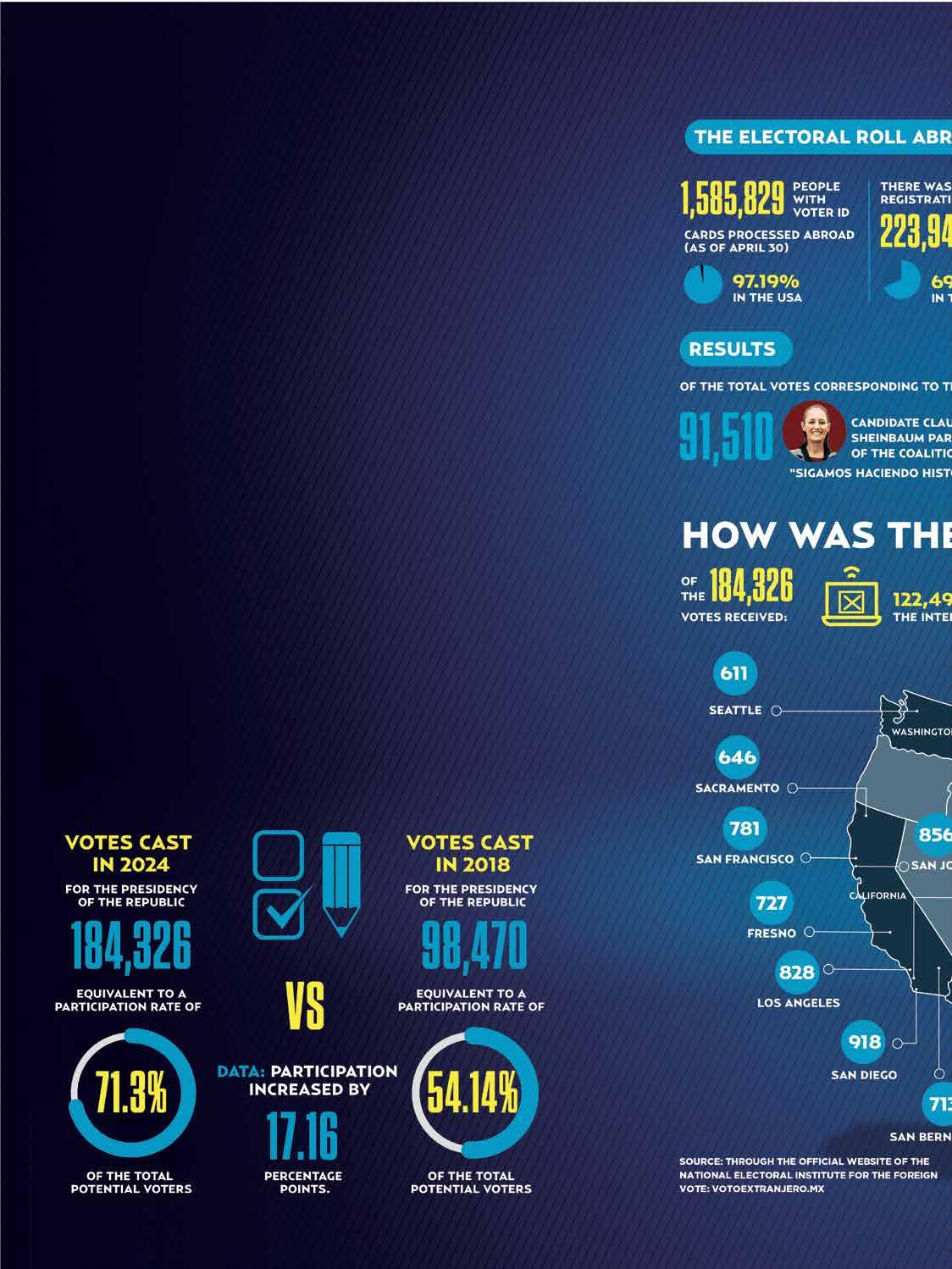
HOW MEXICANS ABROAD VOTED
THE ELECTORAL PROCESS OF JUNE 2, 2024, WAS THE LARGEST MEXICO HAS EVER HAD, COMBINING BOTH FEDERAL AND LOCAL ELECTIONS WITH MORE THAN 20,000 POSITIONS TO BE FILLED. IT WAS ALSO SIGNIFICANT IN TERMS OF THE PARTICIPATION OF MEXICANS ABROAD, WITH A VOTER TURNOUT THAT DOUBLED THE 2018 FIGURES. WHO, HOW MANY, HOW, AND TOWARDS WHOM WERE THE VOTES OF THE MIGRANT COMMUNITY CAST? EL HERALDO DE MÉXICO USA SHARES THE FIGURES OF THE FOREIGN VOTE.
BY ANGÉLICA SIMÓN UGALDE ILUSTRATION: JORGE PEÑALOSA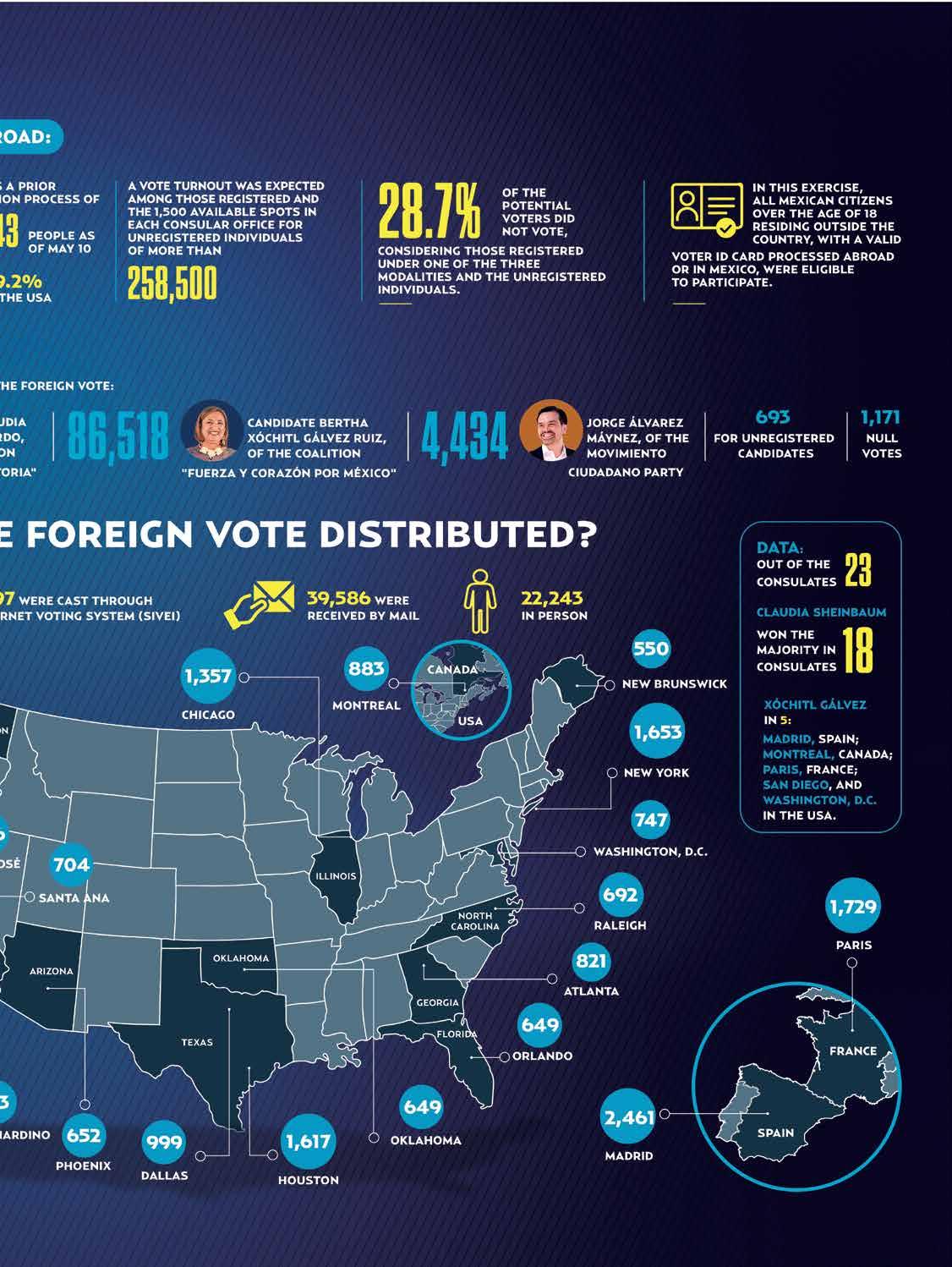

Alma Eunice Rendón Cárdenas
COORDINATOR OF VIRAL
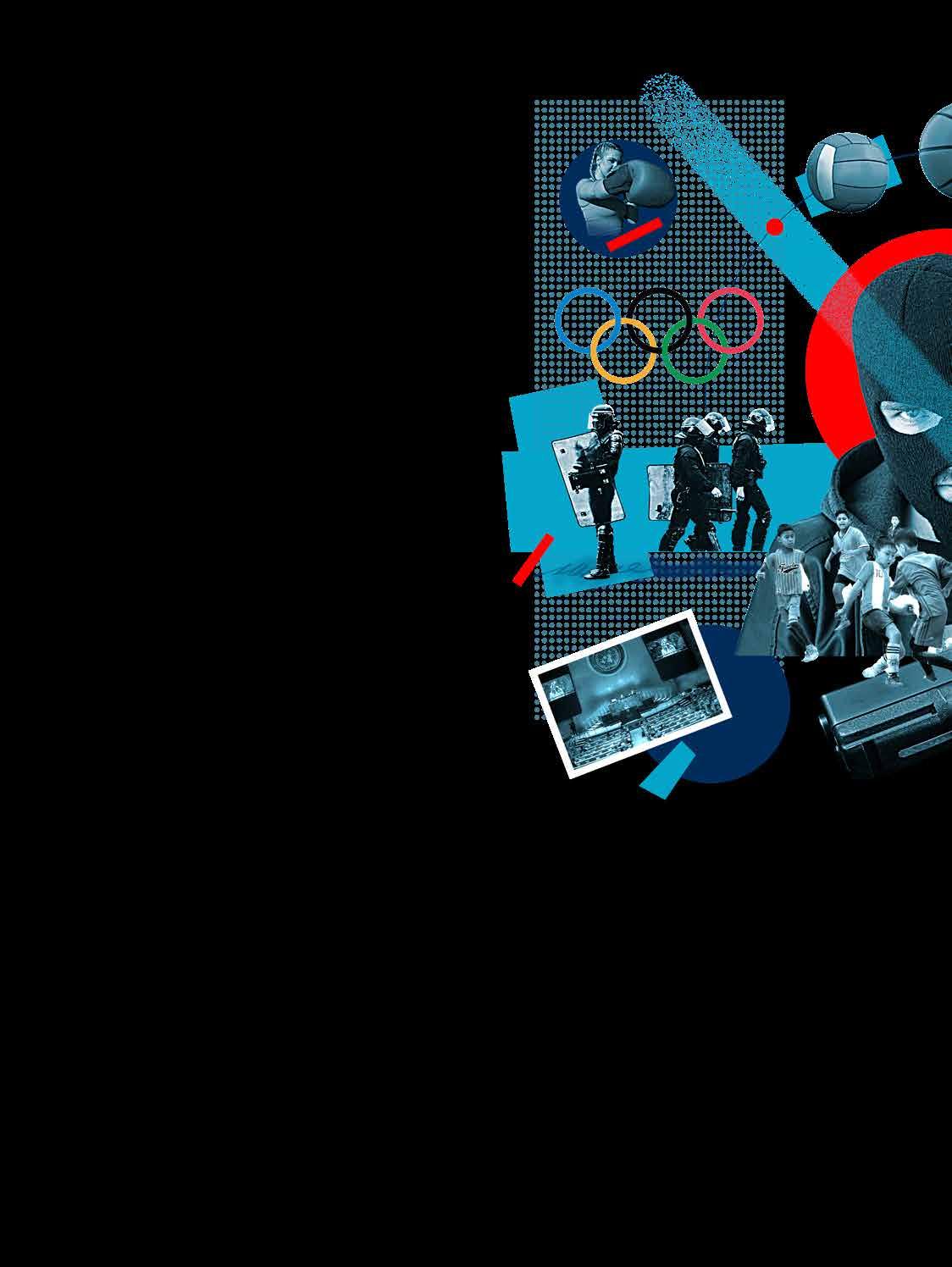
Knockout Crime
RED VIRAL, RECENTLY PARTICIPATED IN A HIGHLEVEL DEBATE TITLED “CRIME PREVENTION AND SUSTAINABLE DEVELOPMENT THROUGH SPORTS,” ORGANIZED BY THE GENERAL ASSEMBLY IN PARTNERSHIP WITH THE UNITED NATIONS OFFICE ON DRUGS AND CRIME (UNODC). THIS ENGAGEMENT PROVIDED US WITH THE OPPORTUNITY TO SHARE EFFECTIVE STRATEGIES WITH UN MEMBER STATES CONCERNING HOW SPORTS CAN ADVANCE SUSTAINABLE DEVELOPMENT GOALS AND MITIGATE CRIME. ADDITIONALLY, WE ATTENDED A RELATED SIDE EVENT FOCUSING ON THE “SPORT AGAINST CRIME: OUTREACH, RESILIENCE, EMPOWERMENT OF ATRISK YOUTH” (SCORE) PROJECT, JOINTLY INITIATED BY UNODC AND THE INTERNATIONAL OLYMPIC COMMITTEE. THIS INITIATIVE AIMS TO EXPLORE THE ROLE OF SPORTS IN PREVENTING VIOLENCE, PROMOTING RESILIENCE, AND EMPOWERING VULNERABLE YOUTH, ULTIMATELY CONTRIBUTING TO PEACEFUL AND SECURE COMMUNITIES.
As stated in the Tokyo Declaration, it is necessary to address the deep and structural causes of violence in a comprehensive and multisectoral manner. This includes designing inclusive policies, evidence-based strategies, and tailored approaches to improve prison conditions and prevent recidivism among those who have committed crimes.
Globally, more than 11.5 million people are incarcerated in various penal institutions. In 135 countries, prisons face critical overpopulation, and one-third of prisoners have not been sentenced, reflecting significant challenges in our justice systems, particularly in the Americas.
In Mexico, we face significant challenges with over 240,000 people in jail, 40 percent of whom
are awaiting sentencing, meaning it has not yet been determined whether they are guilty. Additionally, one out of every four individuals reoffend, and ends up back in prison. For young people in conflict with the law, the most important challenge is successfully achieving their involvement and a sense of belonging. Sports, particularly boxing, have proven to be a significant hook to attract and empower them. However, it is necessary to accompany sports with protective factors such as psychological and emotional skills.
Many of our prisons are overpopulated; for example, the Estado de México state, which has the largest penitentiary system in the country, operates at almost 250 percent of its intended capacity.
Unfortunately, our penal system has focused on punishment. After more than ten years of working in jails, we have learned
that mistreatment does not reintegrate anyone; on the contrary, it increases negative feelings such as resentment, hatred, revenge, anger, frustration, rage, and fear.
In this context, we had the opportunity to present our program “Knockout: Do Not Give Up”: a tertiary prevention model coordinated by Red VIRAL, in partnership with the World Boxing Council (WBC), and the Foundation For the Reconciliation, that, through the practice of boxing, forgiveness and reconciliation methodologies, and comprehensive emotional support, aims to contribute to the reintegration process of incarcerated individuals and to prevent recidivism. It is implemented through an interdisciplinary team of professionals and in close coordination with security authorities.
“When I hit the punching bag, I feel like I live in another world, that my heart is free.” Pablo
The program enhances participants’ life skills and emotional management while also restoring their family ties. Every Monday, we hold videoconferences with their relatives and various notable figures, fostering stronger bonds and connections. The comprehensiveness of the program has a very motivating and powerful result. We have managed to reduce negative emotions such as hatred, revenge, anxiety, and depression among participants while modifying the risk dynamics in which they live and achieving their social reintegration once they leave prison. Boxing is a popular sport that many participants identify with and find exciting. Consequently, it serves as an effective hook to attract inmates to our program. Sports, in general, are powerful
tools for transformation, with the potential to change lives and dynamics. Specifically, boxing possesses unique qualities that greatly aid in the reintegration of incarcerated individuals. The energy, discipline, teamwork, and dedication required in boxing have proven to be key components in transforming inmates.
Our program has not only been implemented in prisons but is also designed for secondary prevention with young people in high-crime areas.
In contexts of high criminal vulnerability, the lack of social, educational, and labor opportunities among young people increases the risk of their participation in illicit acts. To design effective public policies, it is crucial to understand these youths’ contexts and consider the exclusion and stigma they face. Many young people in the Americas live where violent behavior is the norm, with parents involved in crime and gangs, single-parent households with working mothers, domestic violence, and marginalized areas with high vulnerability. Organized crime exploits these conditions, making it essential to design comprehensive programs that include sports and other components of empowerment and belonging to remove labor from crime and create healthy, violence-free spaces. In Mexico, where homicide is the leading cause of death for ages 15 to 44, the fight against drug trafficking requires a multi-front effort addressing both symptoms and deep-rooted causes.
Keeping youth away from crime involves creating targeted policies and specific opportunities considering their contexts, exclusion, and stigma. Innovative and diverse teams must implement sports-based social crime prevention projects, with individuals from similar backgrounds as the participants to foster natural connections. This approach aims to transform the cohesion and support young people seek in gangs into positive elements of neighborhood organization for art, sports, culture, and employment. Over the past ten years, we have worked on designing and strengthening secondary and tertiary prevention policies and programs, such as “Knockout: Do Not Give Up,” which addresses at-risk youth with a comprehensive and holistic vision, based on evidence and thorough evaluation.
tool to promote peace, resilience, and social reintegration. They boost both the physical and emotional well-being of participants, promote teamwork, effort, discipline, and inclusion, and encourage important values such as tolerance, commitment, trust, and equity.
“Knockout: Do Not Give Up” includes over 400 hours of annual work with each inmate and provides a post-correctional follow-up model. Its impact is evident, with experimental evaluations (cases and controls) demonstrating that:
• 100% of participants improve their self-esteem and their family and peer relationships.
• 90% successfully overcome addictions, including difficult ones like heroin and crystal meth.
• 92% demonstrate the ability to identify and manage their emotions.
• 98% experience a reduction in stress and anxiety.
Boxing is deeply ingrained in popular culture. Many champions come from neighborhoods with high levels of violence and risk factors, which helps incarcerated individuals develop a strong sense of belonging when they engage in this sport. Boxing champions become role models for them.
“Transitioning from the darkness of anger and resentment to the light of mental peace." Emmanuel
In our experience, inmates have transformed emotions such as disappointment, frustration, rage, hate, fear, and anger into hope, love, forgiveness, empathy, calmness, accomplishment, and self-confidence, which greatly benefit their rehabilitation processes. Furthermore, we have certified at least 50 participants as professional trainers at the World Box Council University, which serves as a strong incentive for them to replicate the methodology in their hometowns once they are released, thereby enhancing their social and employment integration.
Transitioning from punishment to emphasizing reintegration is necessary. Our work is to offer an opportunity to those who may have never had one before. These are families, faces, names, and life stories.

In essence, sports, combined with emotional care and life skills, have proven to be a very useful
Finally, we cannot forget that effective sports programs for violence prevention require long-term investments and solid interventions that build on available evidence of what works and why. Rethinking and revitalizing prison systems is advantageous for everyone. It’s crucial that we persist in supporting and scaling initiatives like these to foster a safer, more equitable, and more empathetic world.
